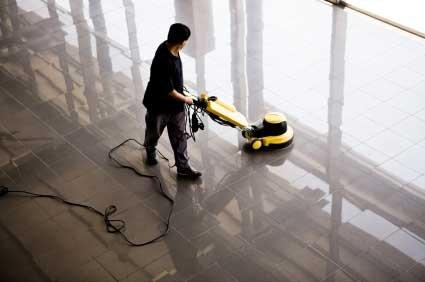The designer trend toward larger format porcelain and natural stone tile that requires fewer grout joints continues in 2021. Many newer sizes – 600×600 millimetres (mm), 750×750 mm, 900×900 mm, 1000×3000 mm and1200x1200 mm (up to 1620×3240 mm) – have become popular. With these massive panel formats, more stringent requirements for substrate flatness, anti-fracture membranes, proper setting material systems and expansion joint layouts must be followed.
Preparation of the substrate is key to a successful outcome. Floors must be flat to 2 mm across (3.049 mm at a maximum). These strict criteria are necessary to avoid any lippage between tiles. Lippage is a dangerous trip hazard on a floor and must be avoided.
PROPER INSTALLATION METHODS
In new construction where floors will be installed over concrete, specify to allow for a depressed slab of two to three inches. The porcelain or stone tile is then placed into a mortar bed (mix of sand, cement and a binder) over a 6 mm poly slip sheet. This installation method is more than 2,000 years old and allows to adjust for unevenness in the subfloor and achieve a flat outcome without any trip hazards. It is also an economical solution, with an average cost of $1 to $2 per square foot for labour and materials.
Self-levellers are often used for retrofit installations. Many allow for buildup from a feathered edge to 12 mm thick. These may be used over old adhesive residue, existing tile and other difficult substrates; however, it is best to consult with the mortar systems supplier. The average cost is $3 per square foot for labour and materials.
Bonded and unbonded anti-fracture membranes are available for both new and retrofit installations. These membranes allow for independent movement between the tile and substrate. The bonded version is installed onto the subfloor with either mortar or a special adhesive on the level or levelled substrate. The unbonded option simply floats atop the existing flat subfloor and the tile is bonded directly to the membrane mat. As an added benefit, this system can be laid out over substrates that are difficult to tile over, such as old vinyl and linoleum floors or painted or treated concrete. With often little or no floor preparation required, it also saves time and, subsequently, money.
A CLOSER LOOK AT MORTAR
Many mortar manufacturers have developed systems to support these heavier, larger tiles. Installers require increased working time to comb the mortar over the substrate and back butter the tile. Increased non-sag capabilities are also important when installing floors. Often, tile suppliers will have recommendations for proper installation of products and systems. Follow their guidance to ensure success. Remember, they consult clients and specifiers daily on their use and installation product requirements.
JOINT DESIGN CRITERIA
Plan to have perimeter joints and expansion joints, as required by industry guidelines in Terrazzo Tile and Marble Association of Canada detail 310MJ.
For interior tile applications, control joints must be spaced at intervals of 4,800 mm to 6,100 mm in each direction. The minimum joint width is 6 mm. In areas exposed to moisture or direct sunlight, and for above-grade concrete slab substrates, the spacing placement is reduced to 2,400 to 3,700 mm apart in each direction. Again, the minimum joint width is 6 mm.
Due to high temperature fluctuations, use a minimum 10 mm wide control joint spaced at intervals from 2,440 to 3,600 mm apart in each direction for exterior tile applications. In areas of extreme temperature variations (more than 40 C) between summer highs and winter lows, the joint width should be a minimum of 13 mm.
In 2020, zigzag or zipper expansion joint patterns were approved. Installers can now follow the grout joints. This creates a cleaner-looking appearance as the pieces don’t have to be cut up to include the expansion joint.
NEW TILING TOOLS
Bigger tile formats require the use of new handling tools to ensure a successful and attractive installation. Suction cups or an aluminum handling frame for moving these pieces are a must. Large, portable, lightweight tile cutters and tile water saws are now available to installers.


